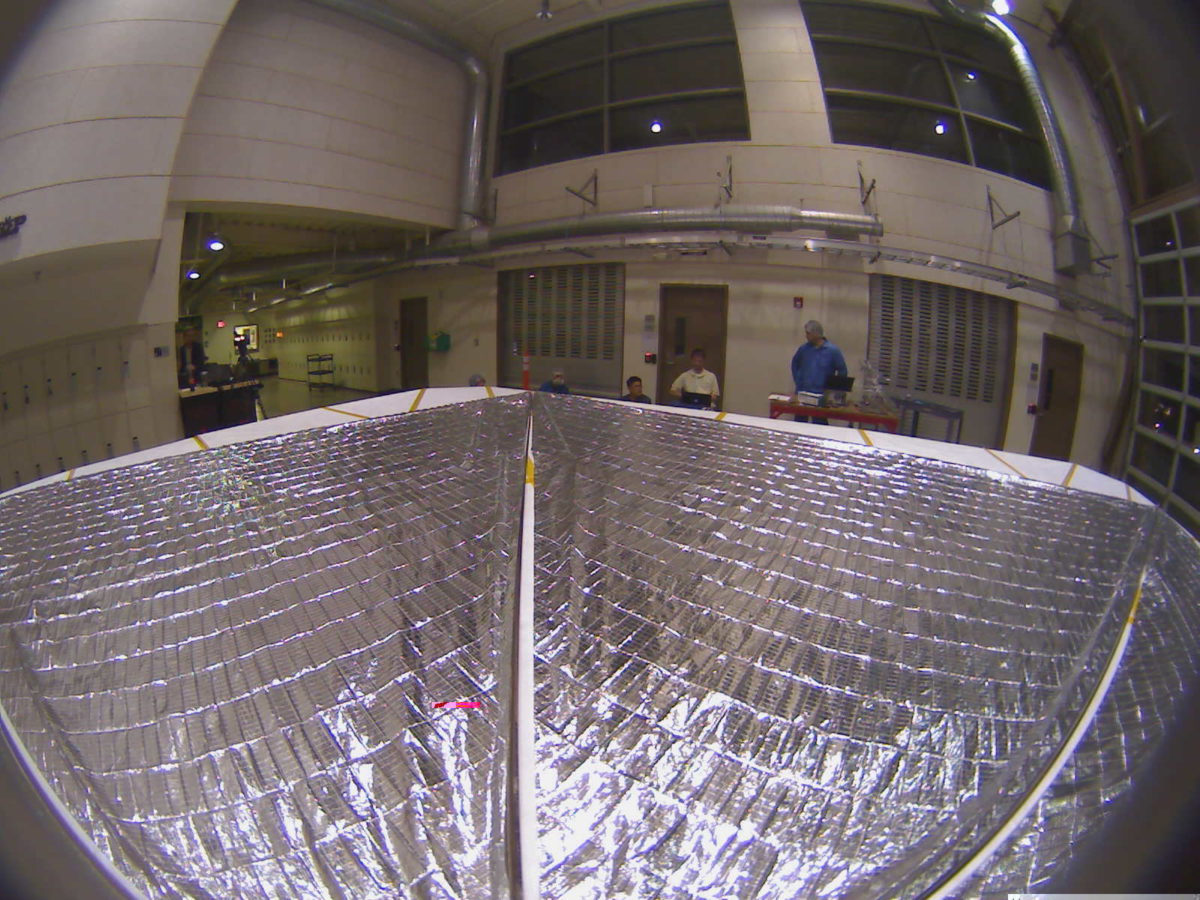Jason Davis • Jun 08, 2015
Sails in Space: Partial Photo, Video and Light Curve (Updated)
Update, June 9: The team made more progress this morning downloading LightSail's post-deployment image, but due to unfavorable communications during a few ground station passes, the image has not yet been completed.
In the meantime, here's a processed version of yesterday's partial image by Emily Lakdawalla:

Original article, June 8:
It’s official: The sails are out.
This afternoon, LightSail mission controllers downlinked a partial image of the spacecraft’s solar sails in space. The scene, which is scrambled and partially blank because the entire image has not been downloaded, was captured during a Cal Poly San Luis Obispo overflight today at about 12:11 p.m. EDT (16:11 UTC). At the time, LightSail was over the coast of British Columbia, Canada, about 530 kilometers northwest of Vancouver.
The entire image should finish downloading early tomorrow morning.

Earlier in the day, ground controllers downloaded two pictures taken by LightSail's cameras during the sail deployment sequence on June 7. When the pictures were assembled, however, they didn’t contain usable image data. A meeting was convened that included representatives from The Aerospace Corporation, LightSail’s original camera manufacturer. Mission managers decided to command the cameras to capture a fresh set of images.
During the final ground station overflight of the day, one of the new images was partially downloaded and assembled. When more data is downlinked tomorrow morning, the image will be complete. Here's what an onboard camera image looks like with the sails completely unfurled:

Because LightSail’s orbit is already beginning to deteriorate, the engineering team will convene at 4 a.m. EDT tomorrow to plan the day’s actitivies, based on the contents of the completed sail image. If the sail is not completely tensioned, the booms will be “walked out” incrementally, providing important motor count data in preparation for the second flight in 2016. A similar procedure was used to tension the sail during lab tests.
NASA and The Planetary Society are sharing data on the LightSail mission through a Space Act Agreement. In 2018, the space agency is preparing to launch two of its own solar sail-powered CubeSats: Lunar Flashlight and NEA Scout. Early this morning, a team at NASA's Marshall Space Flight Center in Huntsville, Alabama captured this video of LightSail soaring across the sky with its solar sails deployed:
LightSail sails across the sky This video, captured by observers at NASA's Marshall Space Flight Center, tracks LightSail as it flies across the sky on June 8 following solar sail deployment. Observers: Aaron Kingery, Bill Cooke and Rob SuggsVideo: NASA MSFC
The observation was used to create a light curve. With a brightness peaking just above magnitude 4.8, LightSail will be difficult to spot with the naked eye at many locations.

The Time is Now.
As a Planetary Defender, you’re part of our mission to decrease the risk of Earth being hit by an asteroid or comet.
Donate Today

 Explore Worlds
Explore Worlds Find Life
Find Life Defend Earth
Defend Earth

